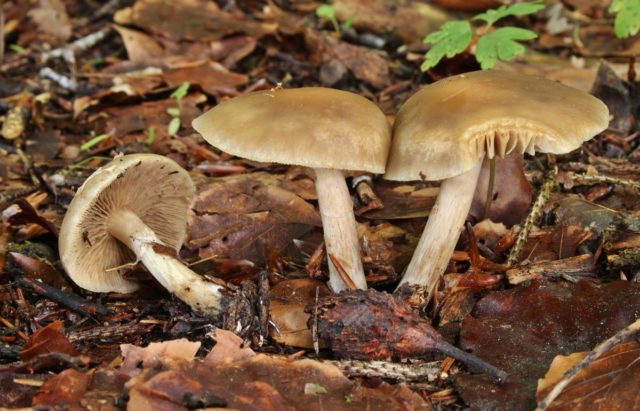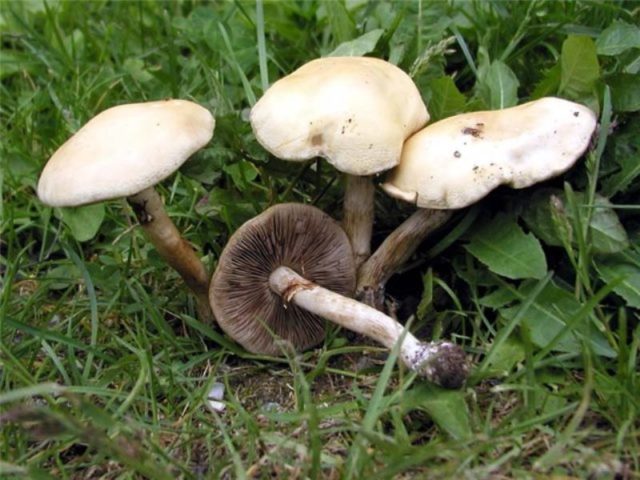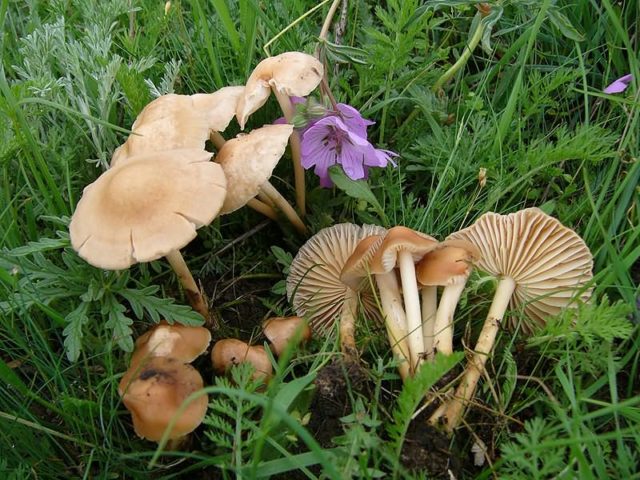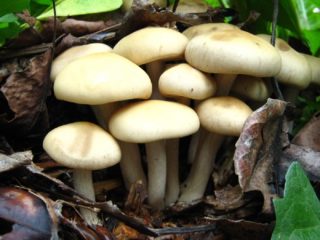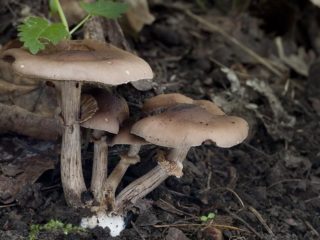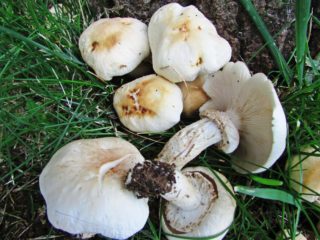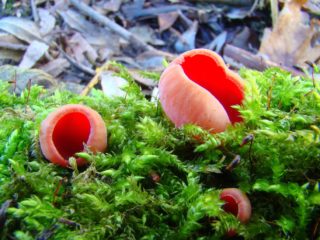Content
Agrocybe stop-shaped is an inedible representative of the Strofariev family. Grows in open areas, clearings and meadows. Fruiting from May to October. Since the mushroom is not used in cooking, you need to know a detailed description, view photos and videos.
Where does the agrocybe grow
Agrocybe stop-like prefers to grow in meadows, pastures, in mountainous and hilly places. Fruiting during the entire warm period, singly or in small families. Since the species is widespread in Russian forests and is not used in cooking, you need to study the external data, view photos and know similar twins.
What does an agrocybe look like?
A thin, fragile cap at the beginning of growth has a hemispherical shape. As it grows older, it straightens out, leaving a small bump in the center. The surface is smooth, wrinkled, light coffee or ocher in color. On a rainy day, a slimy layer appears on the cap.
The lower layer is formed by rare, wide plates not covered with a dense film. In young species, they are light yellow; as they mature, they become brown-brown. A thin, long leg, painted to match the cap, is covered with a whitish bloom. The pulp is thin, loose, has a mealy taste and smell. On the cut, the color does not change, the milky juice does not stand out.
Reproduction occurs by elongated spores, which are located in dark coffee powder.

Grows singly or in small families
Is it possible to eat a stop agrocybe
Agrocybe stop-like is an inedible, but not toxic forest dweller. Causes mild eating disorder when eaten. When the first signs appear, you need to provide first aid in a timely manner. Poisoning symptoms:
- nausea, vomiting;
- epigastric pain;
- diarrhea;
- cold sweat;
- lacrimation;
- headache.
To stop the absorption of toxins into the bloodstream, you first need to flush the stomach. For this, the victim is given a large amount of a light pink solution of potassium permanganate.
Inedible representatives are dangerous to children, the elderly and pregnant women. Due to the reduced immunity, the signs of intoxication appear faster and are much brighter.
Since the agrocybe stopoid has similar counterparts, you need to know their external description and view the photo. Doubles of this representative of the forest kingdom:
- Early field worker - an edible specimen with a small, fragile cap, light lemon color. A thin, long leg is painted in darker tones and has remnants of a film blanket. The fragile pulp has a mushroom flavor and aroma. This forest dweller grows in large families, on rotten wood. Abundant fruiting occurs from June to August. After a long boiling, they are used to prepare fried, stewed and canned dishes.
Used in cooking fried and canned
- Hard - belongs to the 4th group of edibility. The mushroom has a hemispherical cap, no more than 8 cm in size.The surface is covered with a matte skin, which, as it grows, becomes covered with small cracks. Gray-white pulp is fleshy, with mushroom taste and aroma. The fibrous stem is long and thin. The mushroom can be seen on personal plots, in open forest glades, within the city, bears fruit in late summer. Since this representative can be used in cooking, the collection should be carried out only in ecologically clean places.
Prefers to grow in full sun throughout the warm period
- Meadow honey - edible species with a hemispherical cap, light or dark chocolate color. The fibrous stem is thin and long. The surface is velvety, light coffee color. The pulp is light and fragile, with a clove aroma and a sweet taste. Grows in tall grass in open areas, meadows, fields and shallow ravines. Grows in large groups, forming a witch circle, from June to September.
The hemispherical cap partially straightens when fully ripe
Conclusion
Agrocybe stop-shaped - inedible species, when eaten, causes stomach upset. Grows in open areas in tall grass. In order not to harm yourself and your loved ones, you need to know a detailed description of the cap and legs, as well as the time and place of growth. Experienced mushroom pickers recommend, when an unknown specimen is found, not to pluck it, but to walk by.
